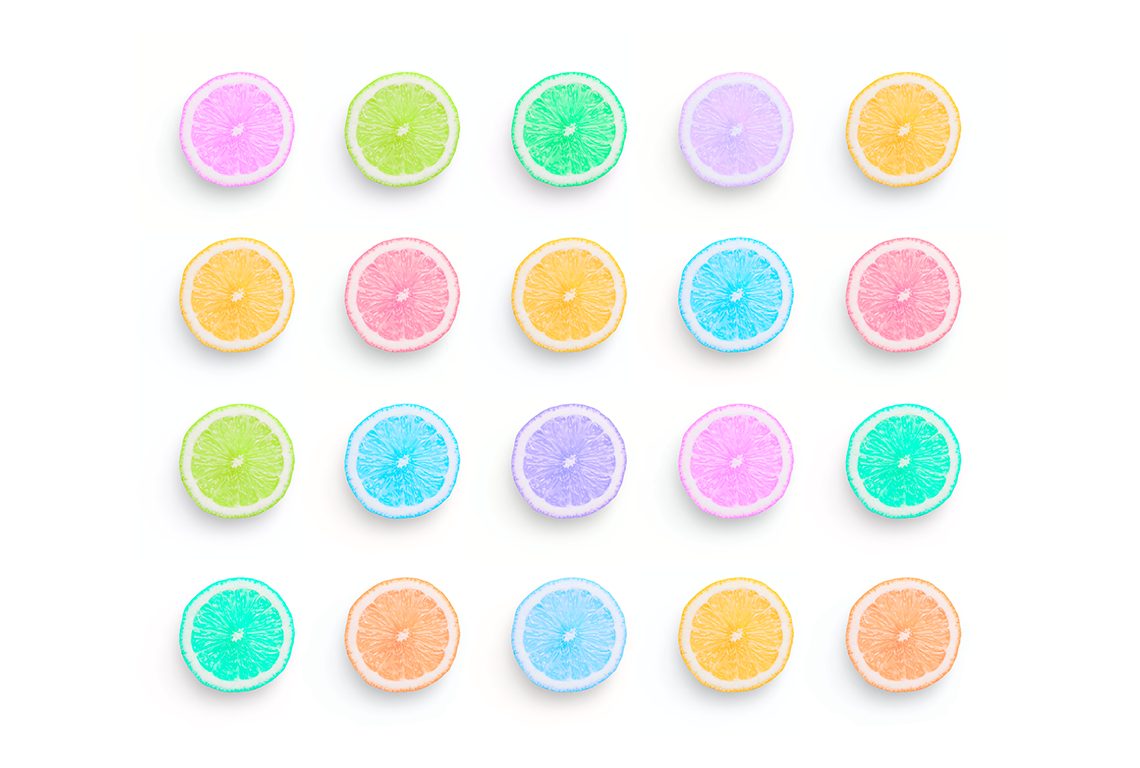
Using marketing emails to keep in touch with your customers is a crucial part of your business. Are you sending the right message?
You want your customers and prospects to be interested in all things your organization brings to the table and look forward to hearing the latest and greatest of what you have to offer. A great way to stay connected is to find your way into their email inbox. In fact, worldwide email marketing revenue has been estimated at more than $10 billion in 2023, showing there’s great potential for boosting your business through email marketing.
But gaining attention through email marketing takes thought and strategy, or your messages will end up in someone’s spam folder—and you’ll possibly lose them as a customer. You need to find a way to connect meaningfully without being spammy.
Sending a few specific types of email marketing messages can help you reach the right people with the right content at the right time. Check out this list of the 16 types of email marketing campaigns you should definitely be sending.

There are many different ways you can reach a lead, prospect, or a new customer in their inbox. Here are the 16 most common types of marketing emails to incorporate into your email strategy.
It’s always a good feeling to gain a subscriber. Someone out there in the universe who wants to know more about your product or services. Sending a welcome email to that person is a way for your organization to introduce itself. Doing so will either educate them about your brand, allow them to learn more about your products, or simply build some familiarity with a new fan.
Here’s your chance to get to know them a little better, too. You can ask them some questions about themselves, like their birthday or location, and even ask that they select preferences for how often they’d like to hear from you to help you tailor their experience.
No matter how you package it, just make sure to avoid making a bad first impression.
When your business has something fresh and exciting to share, do so in a new content announcement email.
Whether it be a new product, feature, sale, coupon, webinar, conference, eBook, or any other type of update, be sure to spread the news. This type of email describes and promotes your offer with call-to-action (CTA) links sending customers to a targeted landing page where they can learn more.
Make the actual content of the email brief with the CTA large and visible so it can’t be missed.
When your organization is about to host something exciting, like a conference or webinar, be sure that your subscribers get a chance to RSVP yes. With an event invitation email, you’ll want to get readers excited about registering for your new event, so be sure to highlight what makes this one so exciting and different from all the rest.
It goes without saying that the invitation email should also include any important details about the event, like the date, time, price, and agenda. Include a form for them to fill out so you can gather information about your attendees.
Businesses of all shapes, sizes, and industries send out newsletters to their customers so they can stay top of mind. Newsletters were actually the leading type of email marketing campaign sent in 2022.
Whether you’re using this type of marketing email to send out new content from your blog or share general news about your company, it can be a great touch-point with your subscribers as you nurture them for the long haul.
Keep the format simple and relatively the same each time you send your newsletter, so your readers can get accustomed to what to expect every time one enters their inbox. And don’t forget an eye-catching subject line and personalization to entice them to read more.
Depending on your organization and the products you sell, there may come a time when you need to send your customers an update. It’s a common use of email marketing—product awareness and promotions were the number one objective of email marketing campaigns in 2022.
A product update email can be a tricky one to send because customers don’t necessarily find them to be interesting or attention-grabbing. Because of this, make them short, scannable, and straightforward. List out the basic details to keep customers up-to-date on any changing features or functionality of your product.
If tons of updates are around the corner, don’t spam your readers with a series of product emails every other day. Consider sending a roundup email highlighting everything they need to know at once.
Nutshell Campaigns plugs directly into your CRM data, so you can create highly targeted audience segments, track the impact of your emails in real-time, and manage all your communications out of a single tool. Get started for free!
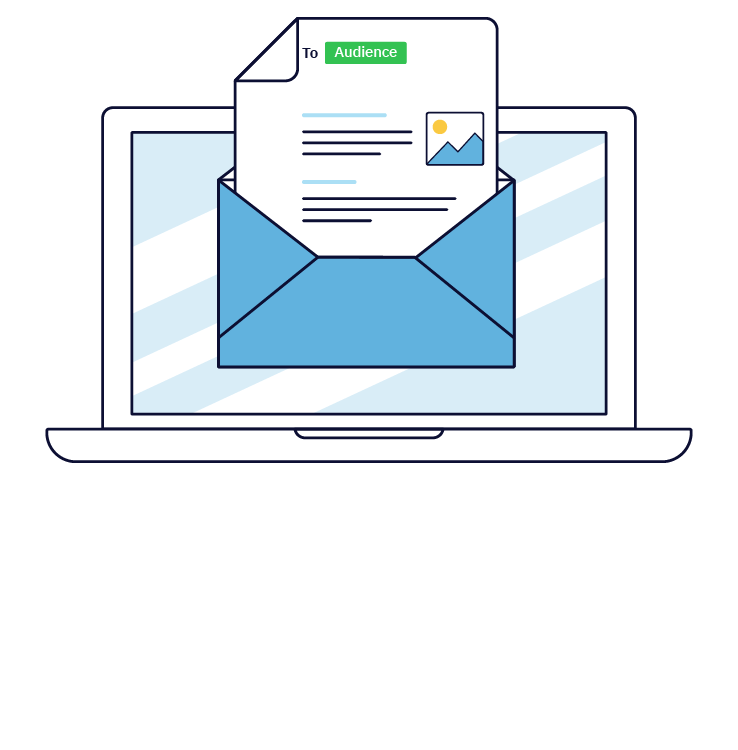
Even the largest, most experienced sales team could use some help in reaching new leads outside your target market. So why not use your most valuable resource to assist—your existing customers? Referral emails can bring in major sales, expanding your reach and growing potential target audiences.
Referral emails invite your leads to create leads of their own. They often offer some discount or exclusive offer in exchange for them bringing in new customers who make a purchase at your existing lead’s suggestion.
A dedicated send email is an email your organization will send for a specific purpose to a specific group of people that subscribe to your messages. Dedicated send emails are sent to segmented groups that share the same characteristic. For instance, when you’re hosting an event, like a conference or webinar, you may want an announcement to only those who have registered or signed up.
Essentially, these emails won’t be to your complete list of subscribers, but only to ones that are in need of the information your email includes. These emails should have a specific CTA and share only the details that the recipients need to know.
Got an exciting partnership lined up? If so, send a co-marketing email. Co-marketing is when two or more companies partner with one another for a promotion, event, or task, as a way to leverage and gain from the audience of another company to increase their customer base.
Whether it’s an announcement regarding hosting a webinar or conference or pairing up for a hybrid product launch, the email blast will go out to customers of all parties involved. Because of this, make sure the email clearly states all details regarding the partnership with each company—especially if the partnership is with a company that’s more popular or more widely known than yours.
‘Tis the season to send a… seasonal campaign.
Whether it’s Valentine’s Day, the Fourth of July, Thanksgiving, or the start of summer, your company may be running a specific promotion or special centered around a certain holiday or season. These types of email marketing campaigns should have build-up before the event, so all subscribers know what to expect.
While these marketing emails are especially beneficial to retail organizations, anyone can send them! Just be sure you start ending these emails early enough to ramp up the excitement, stick to a theme, and use urgency to spur action.
Confirmation emails are critical for helping customers keep track of their purchases. Whether it’s an upcoming flight, tickets to a concert, or something as small as buying a new book, a post-purchase email lets customers know their order has been received.
Be sure the subject line is clear and concise and keep the content of the confirmation email to a summary of the purchase, including a tracking number, the total amount the customer spent, and estimated shipping date. The design can be simple, too, and may include a CTA for the customer to track their purchase.
Similarly, whenever a new prospect, lead, or customer fills out a form on your website, don’t leave them hanging. Make sure they receive a kickback email automatically after submitting a form. These emails are sometimes referred to as “thank you” emails.
Provide a clear CTA for customers in a form submission email and include minimal content. Simply thank the individual for signing up plus any link or information that was promised after sign-up.
An abandoned cart email should be sent to your customers when they put various products or items in their shopping cart and then leave your website without making a purchase. This type of marking email reminds customers of the items within their cart and will usually also include some sort of discount code to entice the customer to return to your website and complete the purchase.
This is your chance to showcase why the customer should come back to your website and click Buy.
Are your subscribers ghosting you? Send them a re-engagement campaign.
In this email campaign, consider asking for feedback regarding your products or services as a way to bring your business back to their minds. You can also send them a promotion that may pique their interest. If they engage, you’ll have fresh feedback and may have even made a purchase.
See also: 8 Winback Email Templates to Help You Recover Lost Leads
How well do you know your leads? If your answer is “not very well,” lead nurturing emails can help get you there. These emails are essentially a connected series of emails for a specific purpose, full of useful content to the reader.
These can be used to promote any number of things, from a new blog post to an upcoming webinar, and even a discount your organization is offering. Whatever the case may be, lead nurturing emails should promote or inform leads about what’s happening within your organization.
Follow us on Twitter! Connect with us on LinkedIn! No matter what kind of social media platform you’re looking to grow, a social campaign can boost your follower count with the aim of asking customers to engage with you elsewhere.
These emails can include a trending hashtag you’d like customers to use when posting pictures of them using your product. When new tweets, comments, or followers begin to appear, don’t forget to engage with your connections! It’s a great way to take your relationship to the next level.
Last but not least is another tried-and-true marketing email campaign… the post-purchase drip. The goal isn’t necessarily to sell anything new, but simply to follow up after a customer has made a purchase. These can be used as a way to build brand loyalty, ask for feedback, or entice a customer to leave a review. Post-purchase emails can also feature tips on how to use the product or service or encourage a customer to post a picture of their purchase on social. These emails are a great way to build trust with your customers and encourage them to come back for more.
While there are dozens of types of email marketing campaigns, there are a few best practices you can keep in mind for any marketing operation. We’ve gathered some of our best email marketing strategies for your convenience.
Keeping these tips in mind can help you construct the perfect campaign and maintain it while navigating the ever-changing landscape of your brand, the economy, and your customers’ spending habits.
In email marketing, segmenting your audience is similar to defining your target market. It’s actually a bit easier since you already have some basic information about the people and brands you’re marketing to. And it’s one of the best ways to streamline your marketing process.
Audience segmentation is the process of separating your email list into categories so you can tailor their emails to their varied interests. You might segment them based on demographic information, like location and purchase history, or you may take a more creative approach and separate them by shared interests and hobbies.
Once you’ve determined your segments, you can create emails that appeal to their particular needs. Segmentation gives you more freedom to adjust your emails and enhance connection while saving you from writing out personalized emails to every client.
One of your marketing goals should be to make a personal connection with your leads. When your customers feel like you care about them as more than a number, they’re more likely to stay with your brand and choose you over the competition—even when the competition is offering something you don’t.
Today, most people’s email inboxes are inundated with impersonal form emails, and a majority of them end up ignored or quickly deleted. Personalizing your email is an excellent way to stand out and show leads that you’re different because you want to get to know them. Plus, it gives you plenty of opportunity to infuse every message with your brand’s identity, giving your customers a better idea of who you are and what your brand stands for.
Some of the easiest ways to customize your content include:
Consider how often you check your email on your phone or tablet over a computer. If you’re like most people, you check and reply to emails more often on your mobile phone than anywhere else. With that in mind, it’s crucial that any emails you send out look as good on a mobile screen as they do on a computer screen. To optimize your messages for any device:
Just as your email should get right to the point, so should your subject line. When subject lines reach upwards of 40 characters, most devices will cut off some of the text. And if the first part of that line isn’t interesting enough, leads won’t even click on it to read the rest.
Be descriptive in your subject lines, but try to keep them under 10 words for the best results. You can always say more in the body of your email copy when necessary.
Once you create your emails and start sending your campaigns, how will you know if your strategy is working? Metrics and analytic data can show you what parts of your process are working and where you can improve your numbers. Collecting raw data like that can be a challenge, but with an automated platform, you can access those numbers with ease at any time.
You can use customer relationship management (CRM) software like Nutshell to automate email messages and track important metrics like open rate, click rate, and bounce rate. Nutshell is designed to help you strengthen relationships with your prospects and customers and monitor how your marketing efforts affect sales. Nutshell also allows you to automate some of your communications, getting your messages out at the right time.
Catch your buyers’ attention at every stage of the funnel with Nutshell Campaigns—an email marketing solution that’s built right into your CRM.
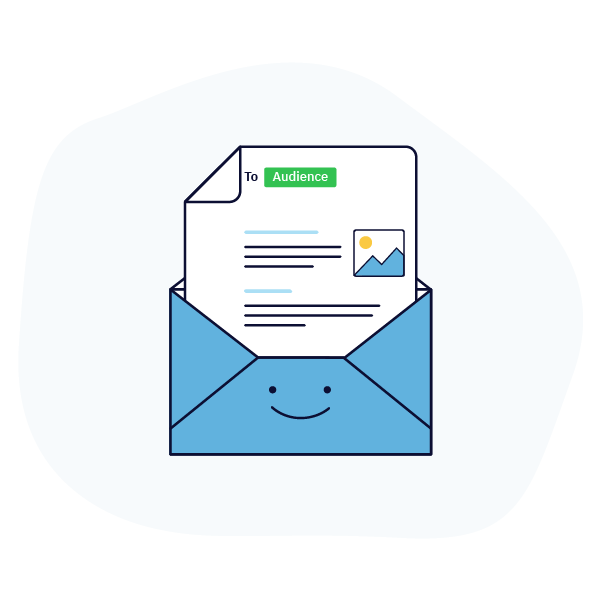
Even the best email marketing experts can let a typo slip through or use improper formatting that makes the entire message unreadable. The good news is that most times, something like this is an easy fix. However, sending it out to your entire contact list can make your brand look unprofessional or possibly untrustworthy.
Prevent this by always sending your emails to a test recipient first. Then, make sure you view the message on a computer, phone, and tablet to ensure it’s optimized for each device. This quick check takes only minutes, but it ensures you deliver accurate and effective communications every time.
Most email sites now have automatic filters to detect anything they think may be spam. This means if your email doesn’t follow spam guidelines, your message may never make it to your recipient’s inbox.
The Controlling the Assault of Non-Solicited Pornography and Marketing (CAN-SPAM) Act was first enacted by the U.S. government in 2003 to give email users rights against commercial email deliveries. All business emails must follow these guidelines, including honoring opt-out requests and identifying your messages as advertisements.
While your email marketing campaigns aren’t malicious, some customers could find them irritating. In fact, the number one reason why people unsubscribe from marketing emails is that they receive them too frequently. Avoid blasting your audience with lots of irrelevant emails they may not want.
At the end of every effective email is a CTA, such as learning more about a sale or forwarding the message. This lets your email’s influence go on once the recipient has finished reading, giving them something more to do with your brand.
Similar to CTAs, including your social media buttons in your emails give your leads something actionable to do after they read your message. Whether you tell them to follow you or share your latest promotions on social media, this is another way of helping your sales team get the word out about your brand without adding to their workload.
No matter what kind of marketing email you’re sending, it’s a great way to connect with your customers. Take the time to ensure these emails reflect your brand, have a snappy subject line, and make your customers feel appreciated.
Want to take the heavy lifting out of your email marketing campaigns? Nutshell Campaigns makes it easy, with beautiful email templates you can automate and send to segmented audience lists based on specific triggers. And best of all, Nutshell Campaigns works perfectly with your Nutshell CRM, showing your team the big picture of how your sales and marketing efforts fit together.
And if you’re still looking for email marketing inspiration, check out our best email marketing tips or the Guide to Writing Much Better Marketing Emails.
The B2B Marketer’s Toolkit collects 120+ of the best lead generation tips ever published on the Nutshell blog. Download it today!
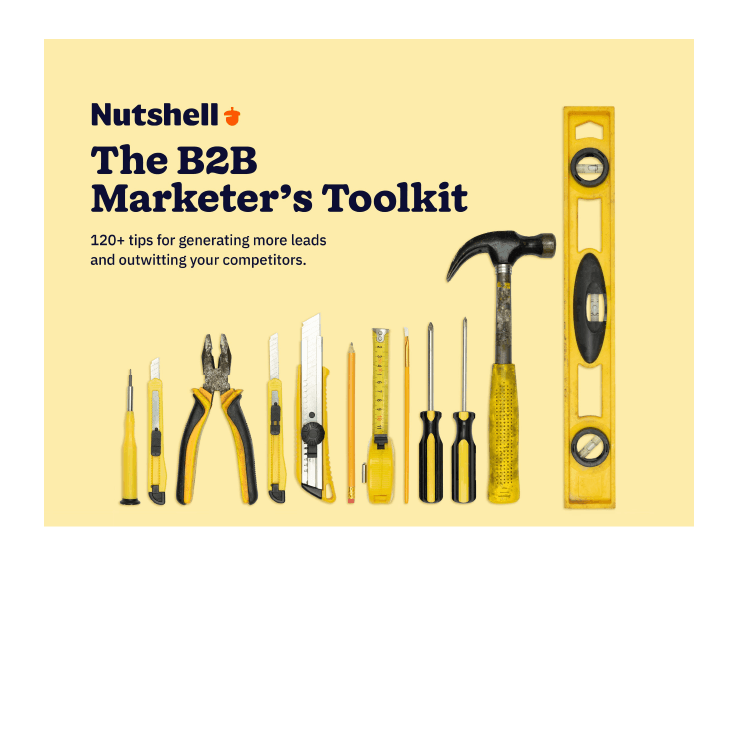
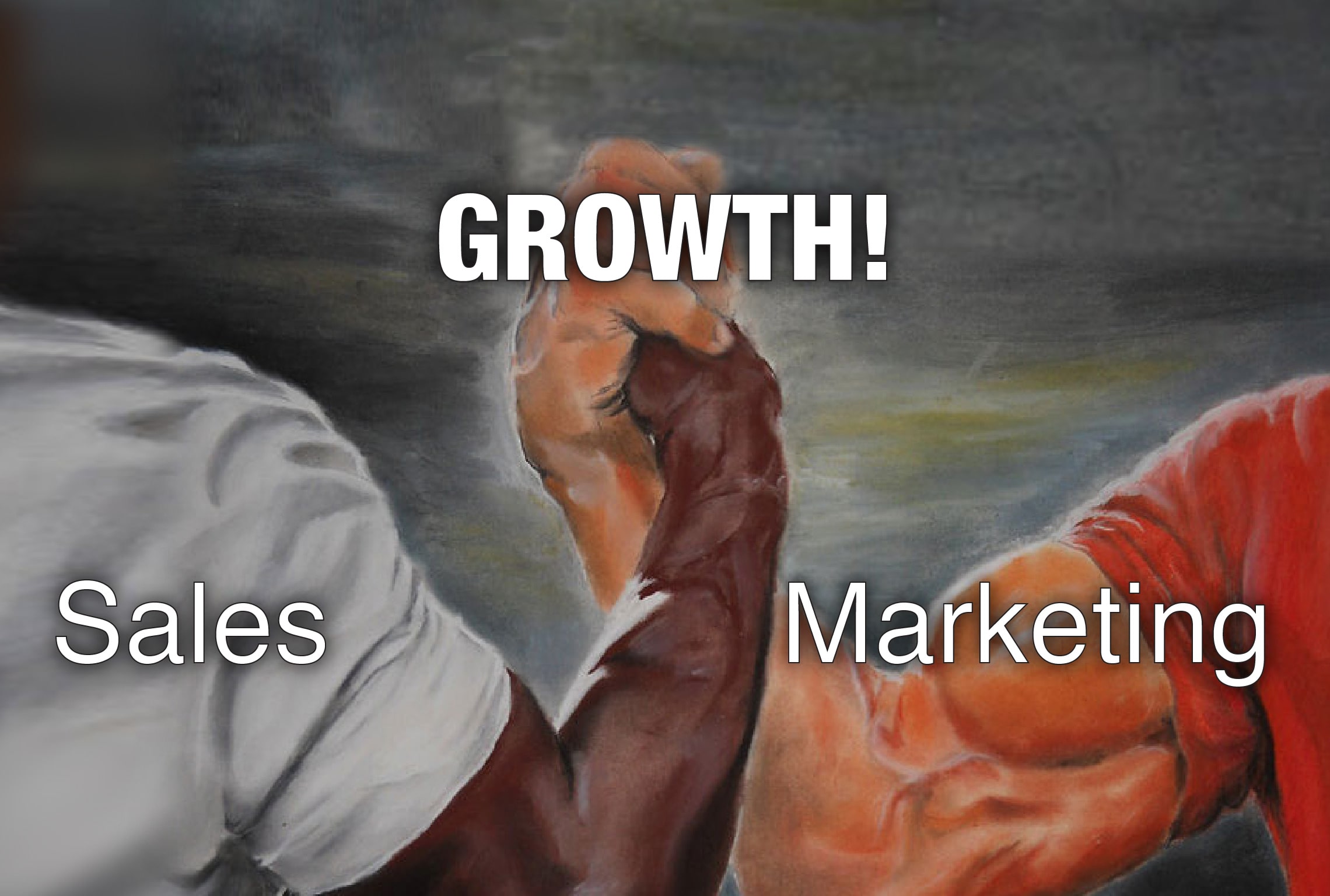

Join 30,000+ other sales and marketing professionals. Subscribe to our Sell to Win newsletter!